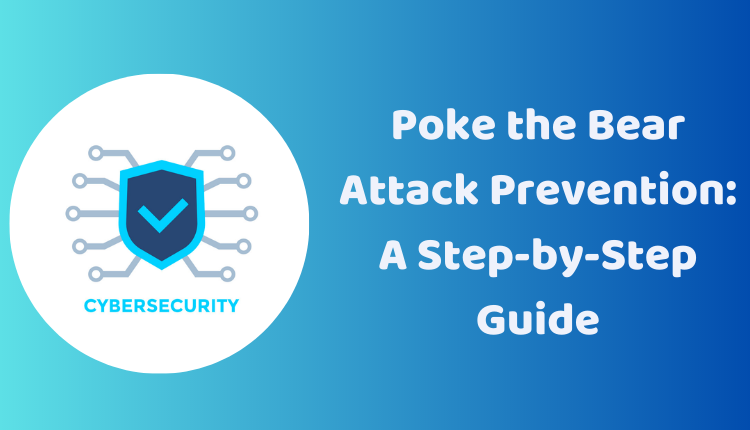Poke the Bear Attack Prevention: A Step-by-Step Guide
In the evolving digital landscape, cybersecurity threats continue to pose significant challenges. Among the myriad of cyber-attacks, a “Poke the Bear” attack has emerged as a unique method used by cybercriminals. Understanding the nature of this attack, its implications, and preventive measures are crucial for maintaining robust cybersecurity.
“Poke the Bear” attack in the cybersecurity context borrows its concept from the idiom, where one deliberately provokes a reaction. The “bear” here is a metaphorical representation of the target system or organization. By inciting a response, the attacker obtains valuable insights, leveraging them for further exploitation or launching a more serious attack. This blog will delve deeper into the intricacies of a “Poke the Bear” attack, reasons behind it, types of such attacks, and preventive measures.
Understanding Poke the Bear Attack
The “Poke the Bear” attack begins with an intentional provocation, typically a bait, to elicit a reaction from the target. The response from the target serves multiple purposes for the attacker, such as:
1. Testing the Target’s Security Posture
By provoking a response, the attacker gets an opportunity to assess the target’s security defense, identify loopholes, and plan further exploits accordingly.
2. Collecting Information about the Target
The attacker can gain crucial information about the target’s system, network, and procedures by closely observing their response. This information can then be used to stage a more targeted, potentially more damaging attack.
3. Disrupting the Target’s Operations
An effective “Poke the Bear” attack can cause operational disruptions, leading to financial losses and reputational damage for the target.
Types of Poke the Bear Attacks
Several forms of “Poke the Bear” attacks exist. Understanding these will help organizations prepare against potential threats. Here are some of the most common ones:
1. Phishing Attacks
In phishing attacks, the attacker sends an email or message appearing to originate from a credible source. The motive is to trick the target into clicking on a malicious link or divulging personal information.
2. Spear Phishing Attacks
Spear phishing attacks are more targeted than general phishing attacks. The attacker collects information about the target beforehand, which is then used to craft a deceptive email or message. This pre-attack intelligence makes the bait seem more legitimate, increasing the likelihood of the target falling for it.
3. Watering Hole Attacks
Watering hole attacks focus on a specific website or online service. The attacker breaches the website or service and inserts malicious code. When the target accesses the compromised platform, the malicious code executes, enabling the attacker to gather information.
Preventive Measures against Poke the Bear Attacks
While the “Poke the Bear” attack may sound intimidating, adopting specific measures can significantly reduce the likelihood of falling victim to it. Here are a few key strategies:
1. Cybersecurity Awareness and Education
Educating employees about potential cybersecurity threats, including the “Poke the Bear” attacks, should be a priority. A well-informed workforce can detect, avoid, and report suspicious activities, strengthening the organization’s cybersecurity posture.
2. System and Network Monitoring
Vigilant monitoring of systems and networks for any unusual activities such as unexpected traffic spikes, strange login attempts, or attempts to access sensitive data, can help in early detection and prevention of an attack.
3. Incident Response Plan
Having a well-thought-out plan to respond to cyber-attacks, including “Poke the Bear” attacks, can significantly reduce the damage. The plan should outline clear steps for mitigating the attack’s impact, preserving evidence, and preventing future attacks.
4. Regular Software Updates
Keeping your software updated is crucial as updates often include patches to fix identified vulnerabilities. Regularly updating your software can help protect your systems from malware and other threats.
5. Use of Firewall and Antivirus Software
A firewall can help in blocking malicious traffic, while antivirus software can detect and remove malware, providing an additional layer of security.
6. Data Privacy
Be cautious about the personal information you share online. Make sure not to share sensitive information such as passwords or credit card numbers unless you are confident about the platform’s security.
The cyber landscape is continually evolving, and new threats are emerging. Staying informed and vigilant can help in navigating this landscape securely. By understanding the “Poke the Bear” attack and implementing the suggested measures, organizations can be better prepared to defend against these attacks, ensuring a secure digital environment.

